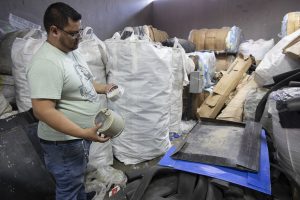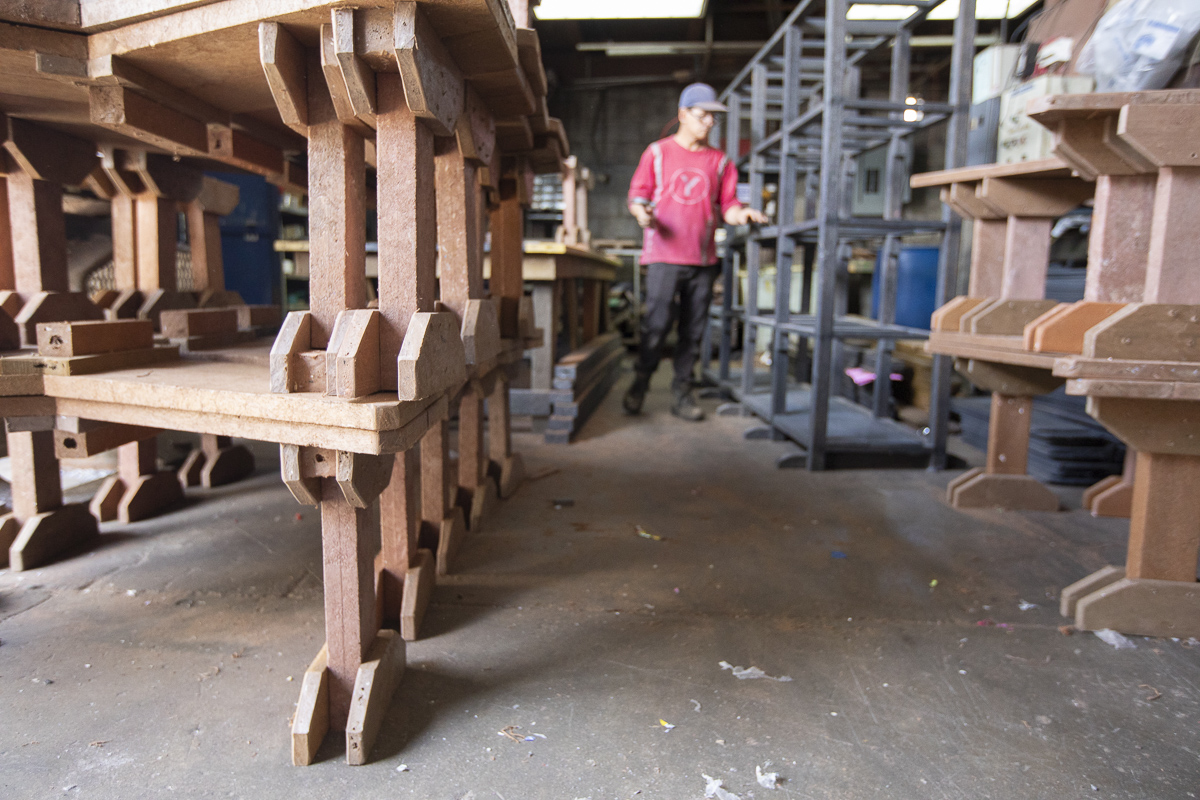“All plastics are recyclable. That is the real answer. We’ve just made products in ways that prevent them from being recycled,” says Carlos Fonseca, co-owner of the company Plastic Waste Industries (PWI) in Calle Blancos, San José.
Carlos hosted me in his office, located at the warehouses where the company founded by his father, Fernando Fonseca Reedel, has been operating for almost 11 years. The office looks like a catalog of all types of plastics, but it also keeps historical photographs of the company: the era when the office was also the mechanical workshop; the time they brought in their big laminating machine; the arrival of Jeffrey, the company’s senior employee, now an encyclopedia of plastic knowledge.
So how do you make a plastic product that can’t be recycled?
“When there are hybrids. For example, a toothbrush: you have the handle made of a type of polymer inside the handle, and you put silicone in it so that it has more grip, although it is not necessary, right? The bristle is made of PET,” Carlos explains. “So, you make a mix of polymers, and it’s not economically viable to separate each one. Even if you try to separate it, there are always traces left on the surface.”
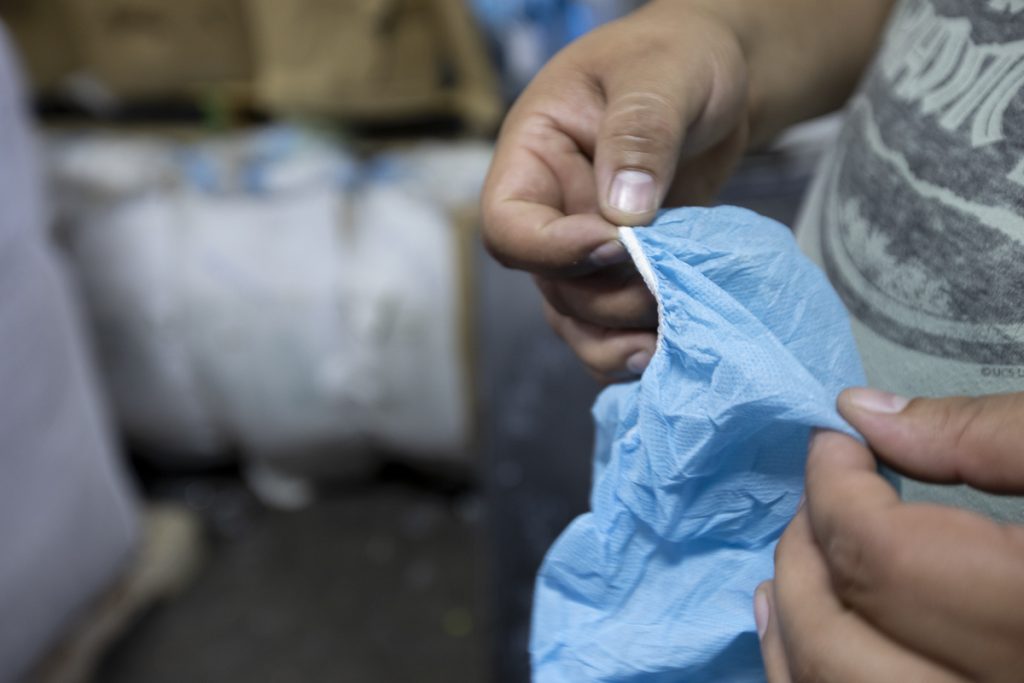
He continues: “So what happens? You created a product that is bad. You could have made a combination of polymers that are compatible, and that you simply grab and recycle. If you make the handle and the bristles out of PET, then there should be no problem in recycling it.”
Carlos is a business administrator, but now he feels that his expertise is plastic. It’s a language he’s fluent in, easily explaining to me why there are so many types of plastics.
“New polymers are always being made or sought for very specific uses,” he says. “Each one has different mechanical properties. Some are more rigid than others; others are more fluid than others; others have what is called tear resistance. Usually, the older the polymer, the more torn it is, so those things have been improving.” He adds that the types of polymers that make up a certain type of plastic dictate its recycling process. There is mechanical recycling, cold or solvent recycling, and alternative recycling.
“You would have to be a polymer chemist to fully understand how a polymer is created and see exactly why so much variety is generated,” he concludes.

As Carlos continues his explanation, I start to understand more and more that the recycling of plastics, like their creation, depends on the purpose for which they are intended. This dictates the necessary characteristics of the raw material. But in the case of recycling, it is necessary to go one step further. When a product is designed, recovery and recycling processes must be considered, as established by the principles of the circular economy.
As it turns out, this learning curve has been slow and complex.
Learning to recycle plastic in Costa Rica
In our National Recycling Survey, many people had questions about what can actually be recycled, especially when it comes to plastic. “Very few food packages are recyclable because they are mixtures of different plastics or plastics with other materials,” said one respondent from Santa Cruz, Guanacaste, echoing what Carlos explained to me.
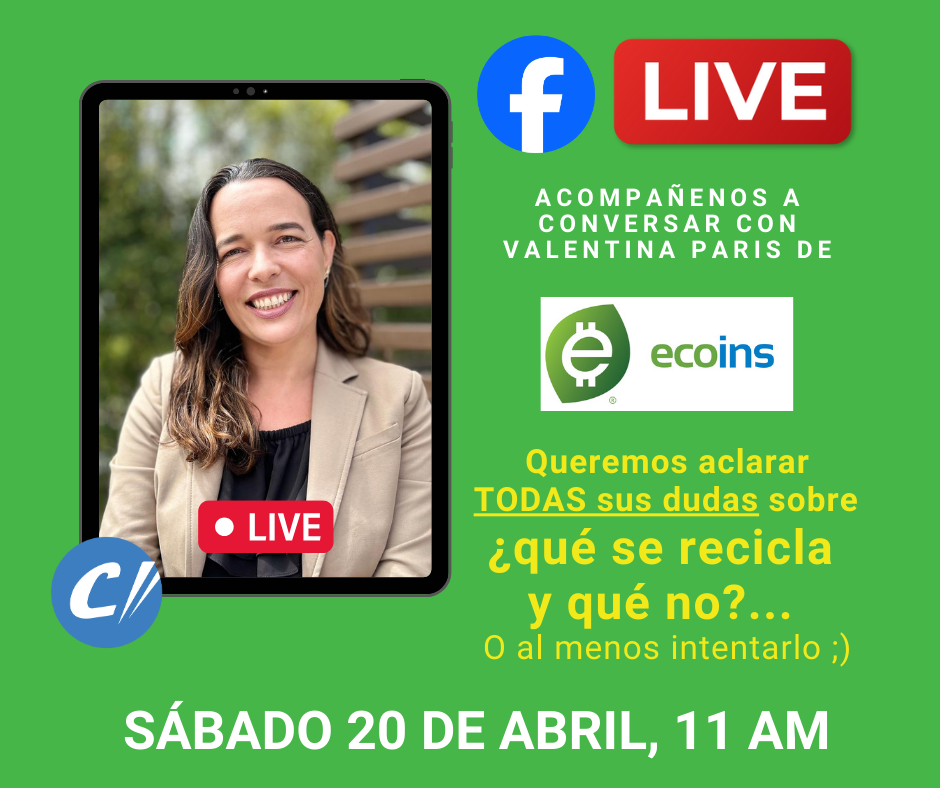
Carlos says that the best way to ensure that plastic products are recycled is to learn to separate them according to their type and common characteristics. Some of the work they have done at PWI and at Recycling World Industries (RWI), PWI’s sister company, is research into how to prepare types of plastics, even mixtures, in order to create secondary material that can be used in the production of something specific. The goal is to create high-quality secondary material that’s comparable to the raw material, and to provide the client with specific instructions about the characteristics of the secondary material that’s been delivered. That way, the client knows how to use it to create the appropriate final products.
Carlos explains that recycling certain plastic waste that comes from the food industry is difficult because recycling processes can, for example, release bad odors. But he says that with the implementation of the right processes, it can be done.
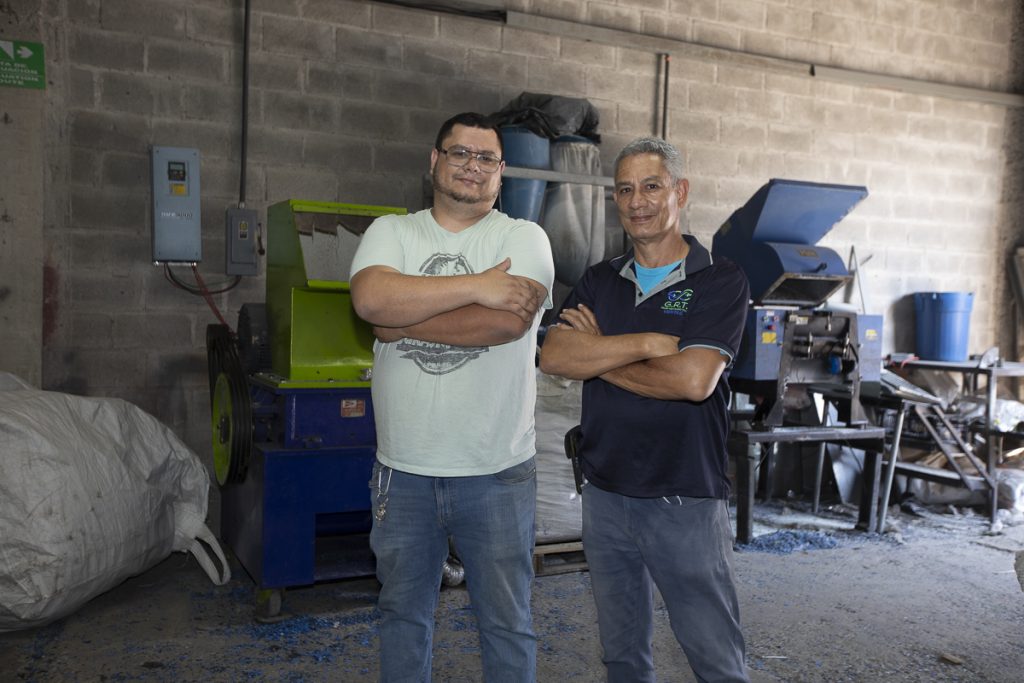
“We research recycling products that are not economically viable, but we want to have an alternative,” explains Carlos. “We have processed, for example, polyurethane, which is widely found in mattress foams.” Carlos says that he and his father have invested a lot of money in these processes, and that they could process much more than the average 30 tons per month that they currently recycle.
Carlos and his father have developed a series of processes in their company that have allowed them to recycle plastics that many consider difficult to recycle, such as PS or plastic #6. For six years, they have been manufacturing packaging for the food industry based on this resin they themselves recycled.
For Carlos, the impact that PWI and RWI want to have in the future is to “show that everything is recyclable” and educate others about this: “We are developing a ‘recycling university,’ so that people have a place to go and learn.”
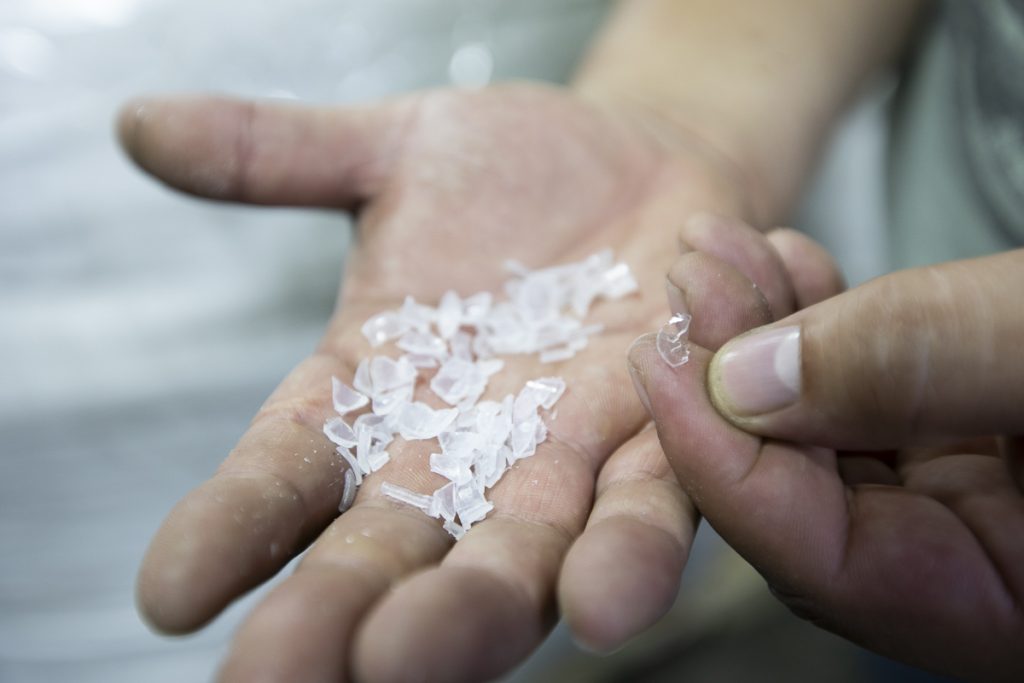
The impact of producing from recycled plastic in Costa Rica
Samantha Miranda,28, is the CEO of the company founded by her father, Ronald Miranda, called Bosque Plástico (Plastic Forest). She is also studying Business Administration, is a certified stylist, and taken introductory veterinary courses—and is the granddaughter of Norma Campos, the owner and founder of Recicladora Capri, a pioneer in the recovery, separation and valorization of recyclable material in Costa Rica.
“I was born into recycling,” says Samantha. “Recycling paid for my education, and we have been able to get ahead.”
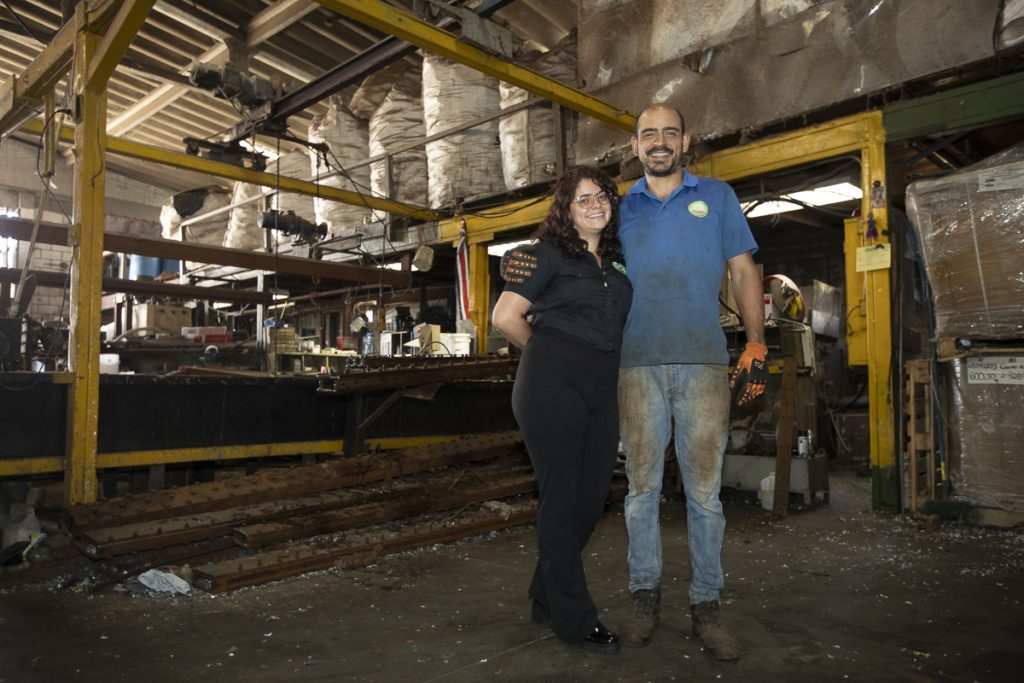
Ronald started recycling plastic when Samantha was a child. She remembers how her father collected plastic parts from washing machines, which no one wanted, and crushed them to sell that plastic. She always helped him because it was common to find gold and silver jewelry among the plastic pieces, and by selling that jewelry she could pay her expenses.
Ronald saw the general availability of plastic grow and had the vision to start saving machinery parts and researching how to go one step beyond shredding it. The cooling tub that they use today to produce plastic wood is the same one that was built at the beginning, more than 12 years ago.
Samantha says that when her father started selling plastic lumber, the most common reaction he received was a complaint about the high price.
“They didn’t see the durability or environmental benefit, so it was very complicated,” she says. “My parents didn’t sell anything for a while. They say They could not even afford screws?.”
Today, Bosque Plástico processes 30 tons of recyclable plastic per month, which it turns into plastic beams of different sizes and shapes. It also uses it to produce finished products such as benches, garbage cans and play areas.
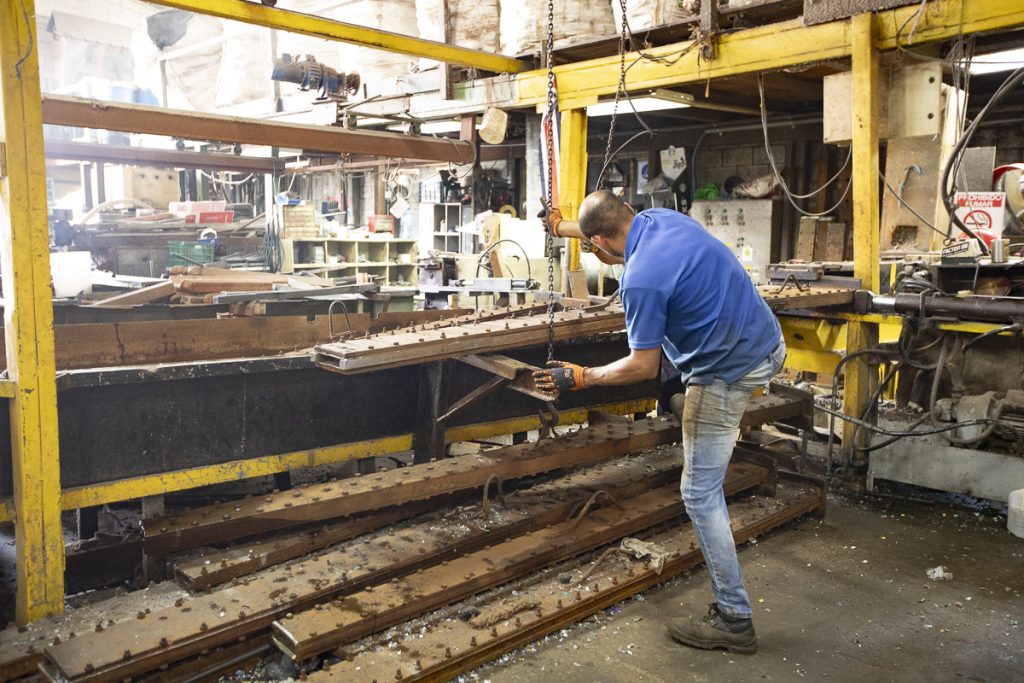
“Today, we are doing quite well, actually. We’re making it work. We want to grow more, do other things, but everything is a process,” says Samantha, adding that the company employs 11 people, including her parents, brother and her. It also indirectly employs a large number of people—such as, for example, the material separators who work for Recicladora Capri, from whom Bosque Plástica buys plastic.
Carlos, from PWI, agrees with Samantha that recycling generates a large number of value chains.
“Recycling generates many jobs,” he says. “For example, I hire a person with a truck of X size to bring me the materials. That person, in turn, hires one or two assistants to transport the material. Since he has to invoice us, he will probably hire an accountant. So there are a lot of indirect jobs that are related to the plastics industry.”
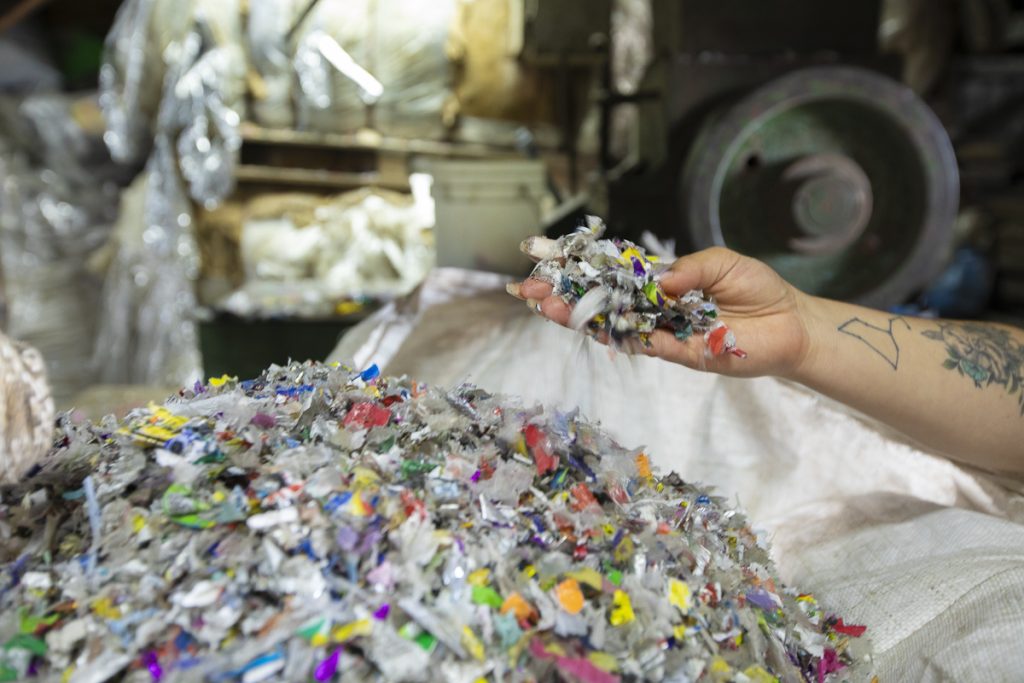
Pacific Plastic Wood provides another example of the impact of recycling in Costa Rica. This company works hand in hand with the nonprofit organization Eco Tárcoles, which carries out trash collection campaigns on the beaches of the Central Pacific: the reusable material they collect on beaches is used to create plastic wood. El Colectivo 506 asked for an interview with the organization to learn more about its impact, but we were not granted an interview by press time.
However, from the information they share on their Facebook and Instagram pages, we know that Pacific Plastic Wood recycles #2, #4 and #5 plastics. The resulting plastic wood has been used to make signs, flower pots, and composters, among other products
What prevents more plastic from being recycled in Costa Rica?
“If you are offered recycled material at the same price as virgin material, people are not going to buy it. Then you have to lower the price,” says Carlos, when asked what prevents his company from recycling more material. PWI calculates that its maximum recycling capacity for different plastic waste could reach 200 tons per month, seven times more than what is processed today.
What’s holding it back? The reasons are economic, but also cultural.
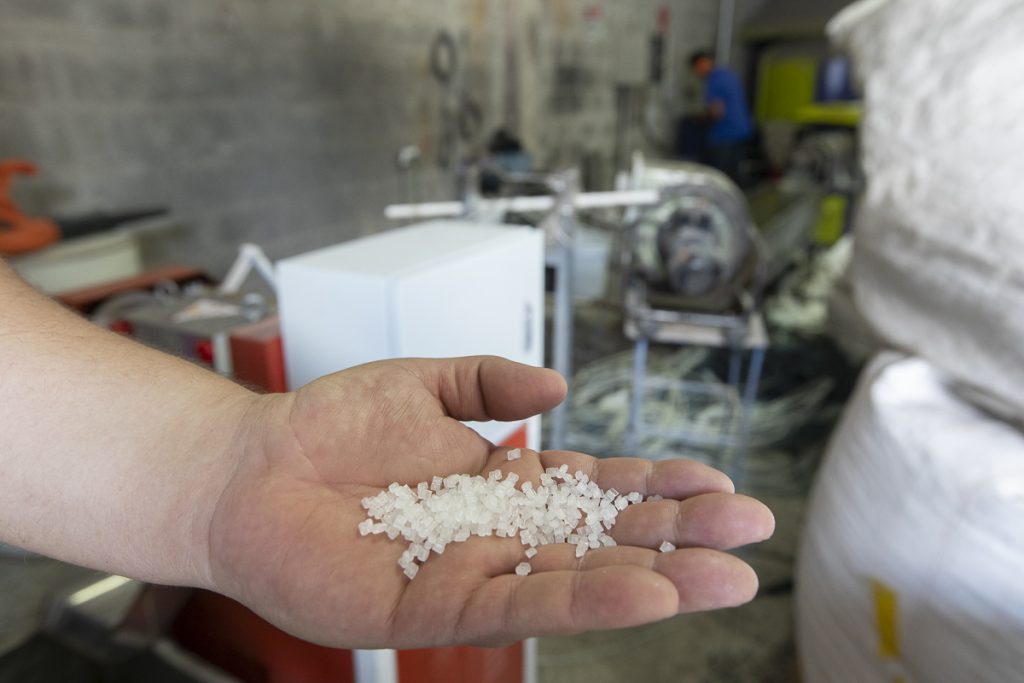
At an economic level, the sales prices of the material often do not justify the production cost. For the companies interviewed, the cost of electricity is very high, and all of them say that being a company that is processing waste should receive some type of incentives, at least in the electricity rate. Expenses such as employees’ medical insurance are also high, a challenge faced by all Costa Rica’s small and medium enterprises, or SMEs.
In the case of PWI, the cultural reason has to do with access to recyclable material. Most of the plastic materials that PWI recycles at this time are of industrial origin. This means that they are large quantities of the same type of plastic that come from surpluses from the medical, food, Free Zone industries, marketing materials, and others. This type of waste is highly desired by all companies that recycle, since the cleanliness and identity of the plastic is guaranteed.
Carlos explains that PWI has not been able to receive large quantities of post-consumer material from collection centers—that is, plastics that are cleaned, dried, and separated at home—because people do not always separate those materials correctly at home. To review or separate this material themselves, they would have to hire additional personnel, increasing production costs.
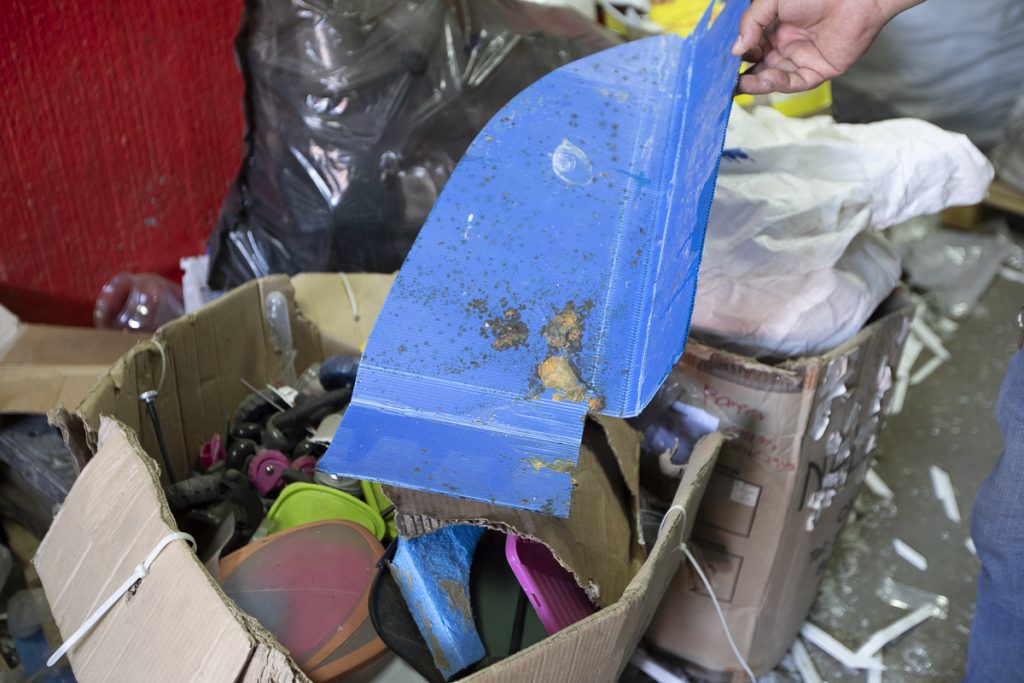
“In Costa Rica, adequate training has not been generated to be able to differentiate between one [polymer] and another and understand why it is separated. So if you tell me why I don’t get the materials, it is because there is no one in the first place who can understand that this is polystyrene, and these are polypropylene, and that I can buy them both, but separately.” While speaking, Carlos takes a container of cream cheese in his hands that he uses as an example: the box, lid, and in some cases the sleeve are made of different polymers.
When that container arrives at the collection center, the job of properly separating it may be out of the center’s reach—either because the people in charge of separation do not have the knowledge, or because the center cannot find a market to justify the operating cost of separate a small container of cream cheese into three different groups of polymers. That’s what leads this container to end up in a landfill.
“Let’s say that it is not so viable, in the recycling system, because it is not very efficient. If you sent it to me like this [separated] washed, I would buy the 200 tons,” says Carlos. “But people have to learn that they have to remove the cover to send it to the recycling system. And people don’t know it, because no one has told them.”
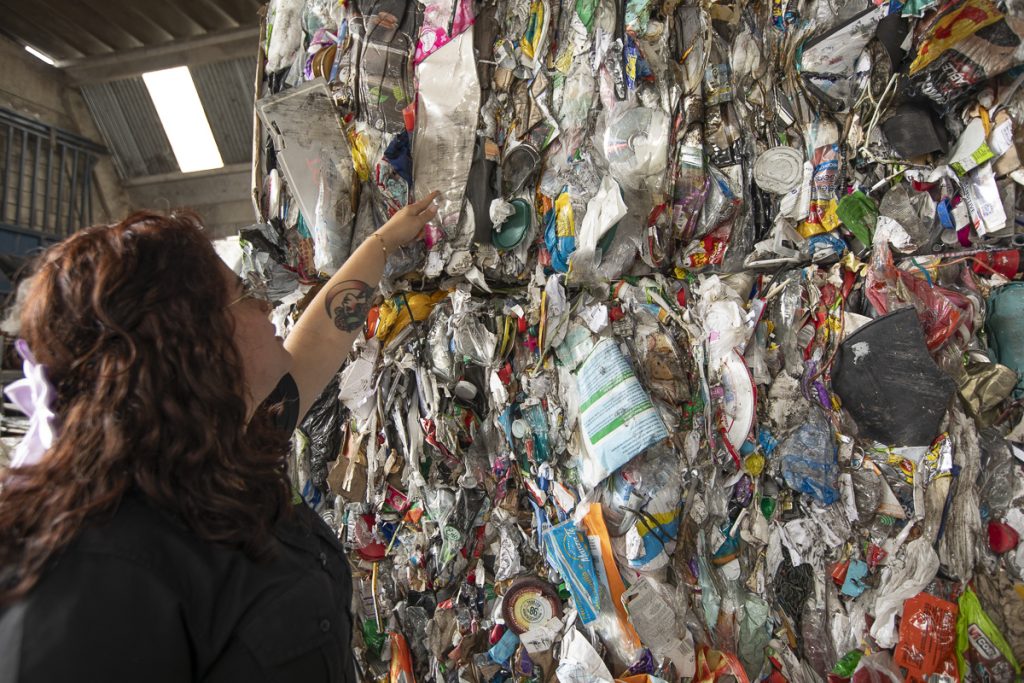
Bosque Plástico faces other cultural problems. The product they process is designed to use a mixture of almost any type of plastic. They avoid using plastics number 1 (PET) and 2 (HDPE), because they are highly recoverable types of plastics. But by making such heterogeneous mixtures, the final product seems more raw, and that can affect sales.
“It doesn’t stress us if you bring it to us combined, because at the end of the day we combine it,” says Samantha. However, she clarifies that it is essential that the material that is delivered is clean.
“It [the mixture of polymers] is a difficult issue to control and even more so when so many types of plastic are used, because they all have different characteristics,” says Samantha. “I mean, it’s easier to use similar families, right? Well, the temperature [to melt them] will be similar, the process will be easier.” Samanta explains that by using so many different types of plastics in her processing, she cannot reach a melting temperature that works for every type. That’s why, in some of her plastic wooden pieces, you can see little pieces of plastic or colored spots.
Samanta says that to improve the finish of the product, they have made changes to the company’s processing and machinery. They are now able to offer plastic wood in different shades. However, she adds that they want to keep using plastic mixtures.
“For me, it wouldn’t make sense, because the idea is to help the planet. That is, it is not just about producing material to earn money. As long as I am here, at least, this will always be the background of what I want for the company,” she says. “It’s about the environment.”
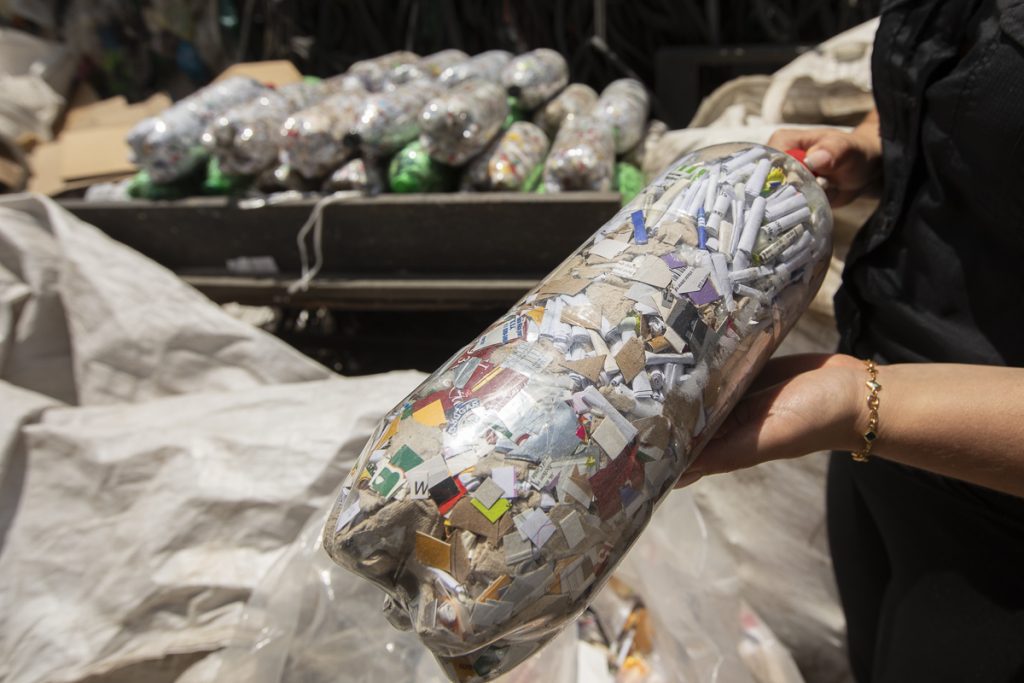
In order to grow, Bosque Plástico needs a larger production warehouse. It also needs to invest in improvements and new machinery. In order to make these investments, it must increase sales.

Carlos explains that the production of secondary plastic material in Costa Rica could grow enormously, because recycling is possible within Costa RIca for almost all types of plastic. The main limit to growth, he says, is the lack of production of finished products with those secondary materials, and the clientele to buy those products. As an example, Carlos talks about acrylic plastic.
“If I have the raw material ready in pellets right now, no one consumes it in Costa Rica, because no one generates acrylic sheets,” he says. The same problem exists with the plastic known as ABS, used to build electronic equipment; it’s very valuable for that industry, but in Costa Rica, it is worth very little, because production does not exist here.
“So it is not only about generating packaging that is compatible with itself and that is also recyclable,” he adds, returning to the problem of polymer mixtures that are difficult to recycle. “There has to be a use for the [recycled material in Costa Rica]. So what is happening? When there’s no use, no one wants it and no one recycles it.”
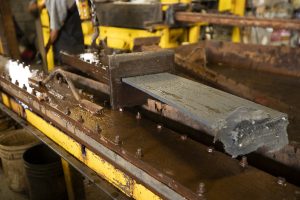
So why go to the trouble of recycling plastic in Costa Rica?
“Part of our mission is to be able to recover ‘tragic plastics,’ the trash that’s out on the street as pollution. Nobody recycles them, nobody wants them. They are ‘garbage,’” says Samantha, listing examples such as cookie packaging, credit cards, and ice cream containers. “They are super complicated materials. It is a very difficult material to recycle. They are hard to work with, and complicated plastics that are not very functional within plastic wood, but we still use them.” She adds that the company does this in order to get these materials off the streets and out of landfills, because in the end, people keep consuming them.
“It is very important to recycle, because the plastic is already there. It is not going to go anywhere,” says Carlos. “A single large national company can process, I don’t know, 100, 500, even 1,000 tons per month. We will not be able to change that production process from today to tomorrow, and not even over the next 20 years. We have to learn to deal with it and work with plastic at the same time.”
